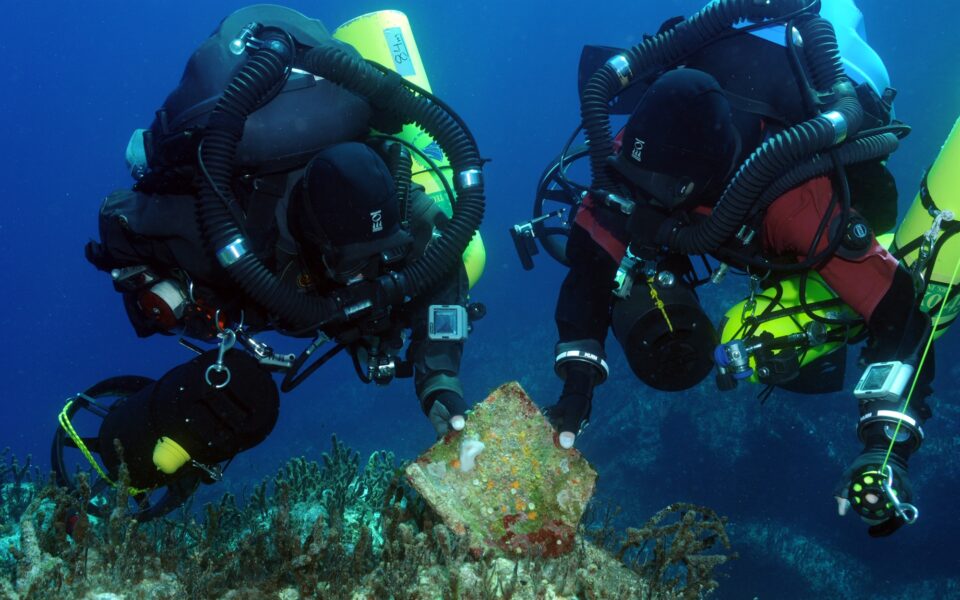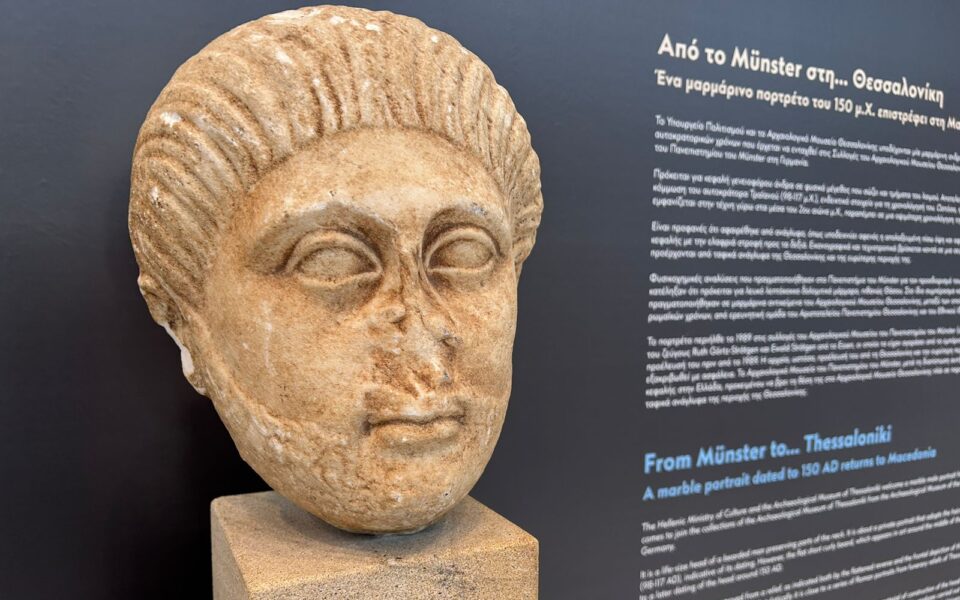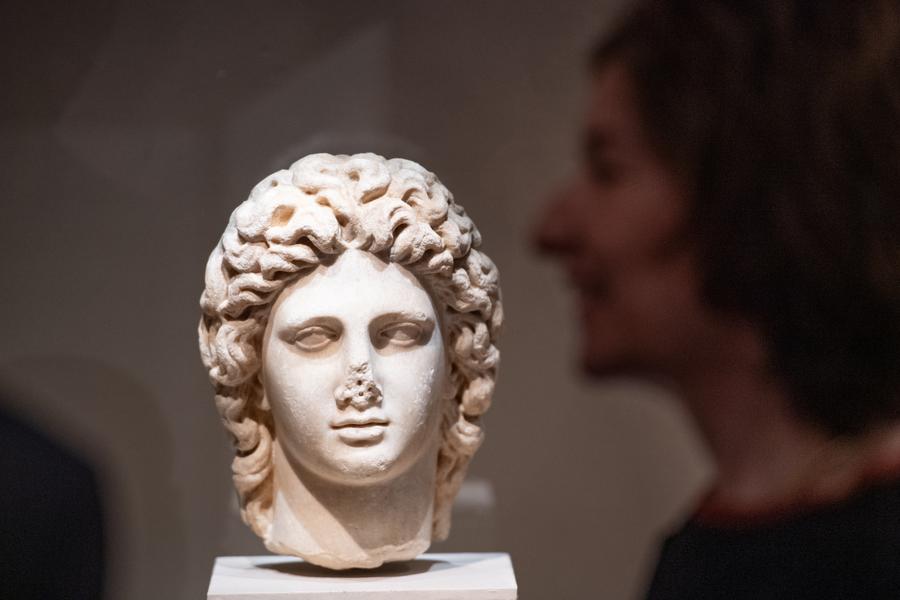Tomb of the Unknown Soldier – the History of a Landmark
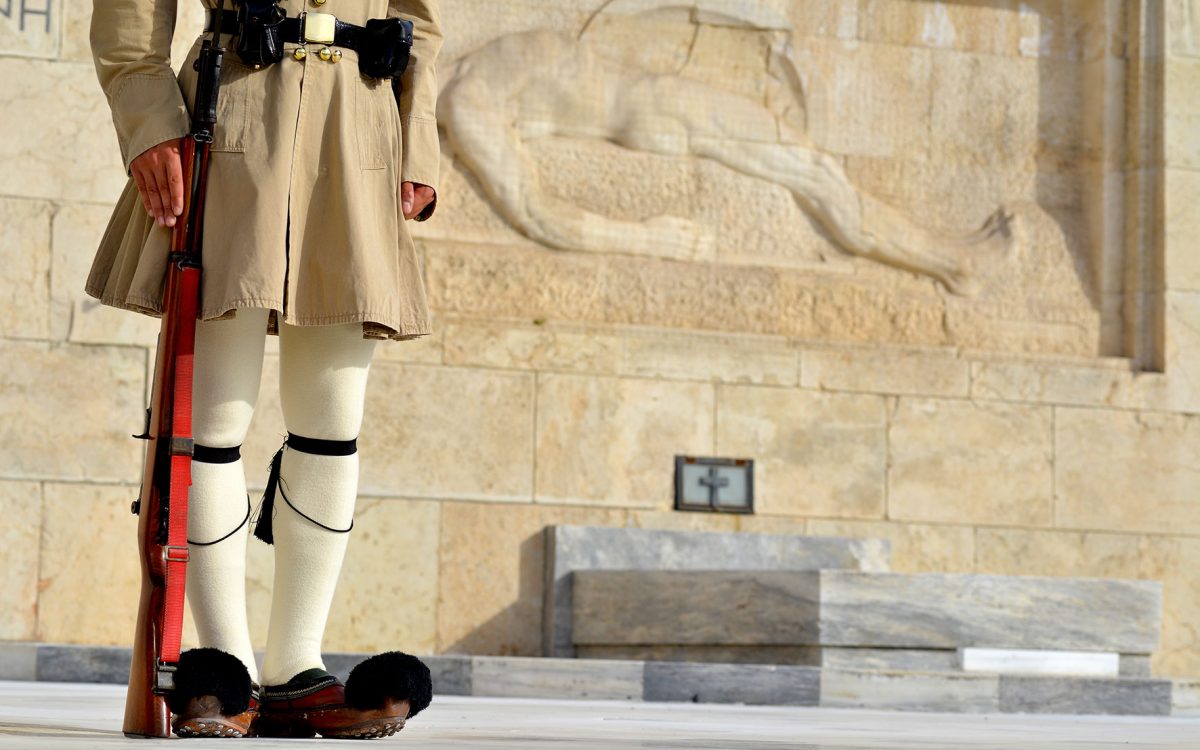

Arguably one of the most iconic public monuments representing Athens’ modern history, the Tomb of the Unknown Soldier turns 90 this year.
It is impossible today to picture the area between Parliament and Syntagma Square without it. It is a monument so intrinsically associated with the image of Athens and its Parliament building that it is hard to imagine the amount of controversy it sparked in its day, starting from its inception, moving on to the competition for its design, and all the way to its completion.
In the din of numerous reactions that interventions in public space have always prompted in Greece, the case of this specific monument stands out. Its enormous symbolic significance inevitably caused ideological clashes that became more acute once the winning study was announced and continued through to its construction, to the extent that the arguing even involved the artistic merit of the sculptural depiction.
Such controversies, however, underscore the importance of how public space is designed – in terms of both architecture and art – and not just with regard to how it helps form relationships and movements, or determine how a city is viewed, but also in how it contributes to the creation of collective memory and identity. To the manner, in short, that the central authority and society of any given era chooses to cast its relationship to the past and to address the future.
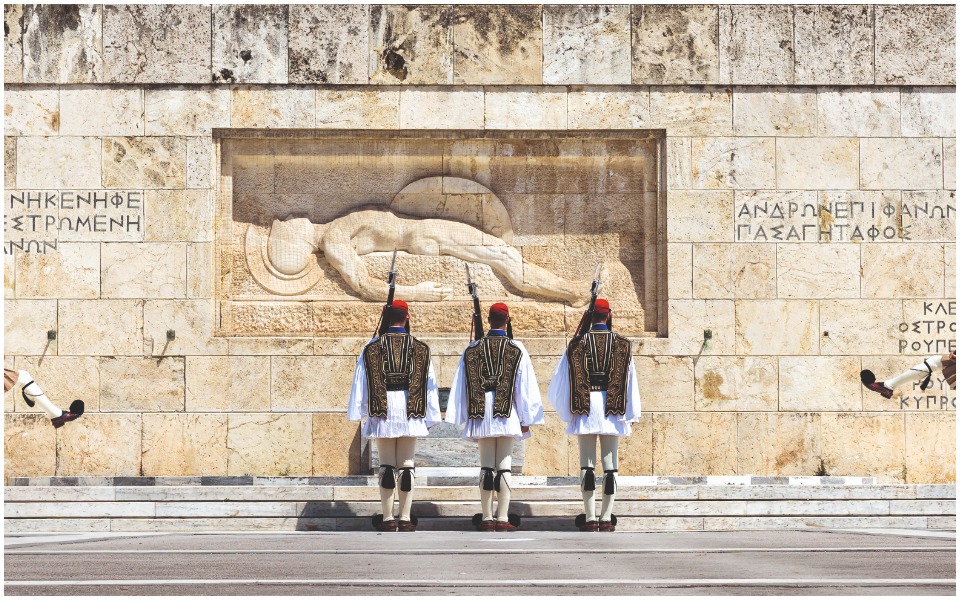

Monuments dedicated to Europe’s unnamed and unsung fallen soldiers began appearing mainly in the aftermath of World War I in an attempt by states to manage a sense of collective loss and to defuse citizens’ anger and frustration at the deaths of millions of young people. The competition for Greece’s monument came at a particularly emotionally charged time, just three years after the 1922 Asia Minor Catastrophe. Apart from bolstering the nation’s morale, the monument was also designed to serve as a connection between the modern Greek state and the country’s ancient past, a connection that was part of a broader cultural and political strategy.
The notion of honoring the unnamed fallen with a symbolic “burial” stretches all the way back to Pericles’ “empty bier decked for the missing, that is, for those whose bodies could not be recovered” (Thucydides, “The History of the Peloponnesian War,” 2.34.3) and was the law in the Athenian nation-state (Euripides’ “Helen”). What, however, was the ideal location for such a monument?
When the idea of building the monument first emerged, in 1925, the area in front of what was, at the time, the royal palace consisted of a large open space stretching from the main entrance to Amalias Avenue. Known as “Palace Square,” it was very public in character. Choosing to erect the monument here had all sorts of obvious symbolic connotations because of its proximity to the palace building, whose use was also under negotiation at the time. Moreover, the likelihood that the sacrifice of the Unknown Soldier would become associated with the Ministry of Military Affairs – which was responsible for carrying out the relevant competition and had an eye on being relocated to the palace building – caused a furor among Greece’s liberal intellectuals.
Another position that had been put forward argued that the “tomb” had to be built at a location that would ensure conditions of “sanctity” and “silence,” like important historical buildings, monuments and locations such as the Pedion tou Areos park, the Panathenaic Stadium, the hills of Ardittos and Philopappou, the Ancient Cemetery of Kerameikos or even the area beside the Athens Metropolitan Cathedral.
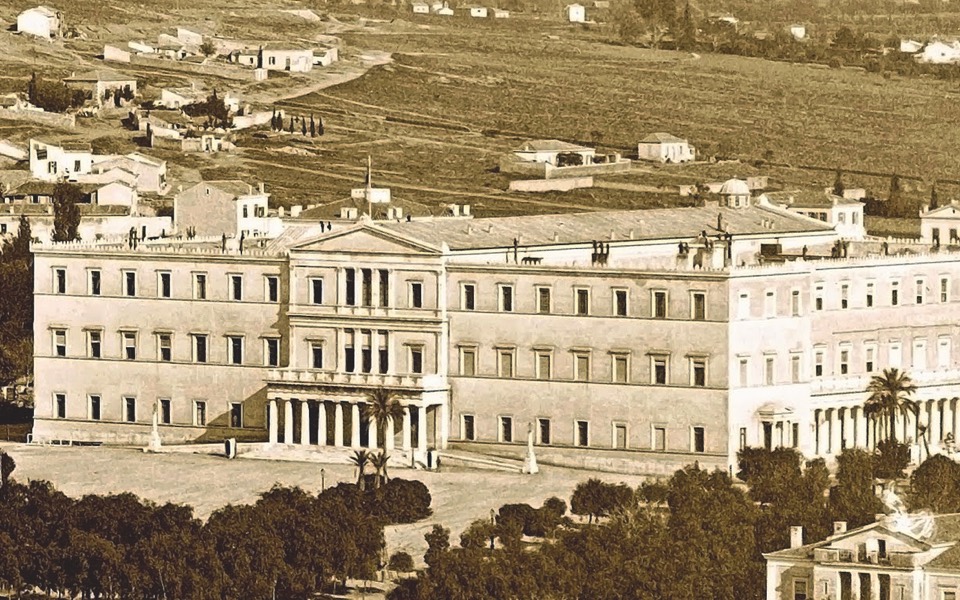

One of the proponents of this point of view was Antonis Sochos, a professor at the National Technical University of Athens’ School of Architecture, who dismissed the ministry’s proposed location in front of the palace as “histrionic” and “ostentatious.” Instead, he recommended the Acropolis as the ideal location for the fact that it was “quiet and commands respect.” According to his proposal, a sculpture of a simple larnax (14th-12th century BC coffin) carved into the Sacred Rock would be “the only powerful link connecting the two ages.”
Reactions to the project continued and even intensified once the result of the competition was made public in 1926, even though pre-eminent personalities in Greece and abroad had expressed their support for the winning proposal. A special committee introduced by law in 1928 eventually recommended that the study for the project be awarded to the architect who took the first prize in the competition, Emmanouil Lazaridis. Nevertheless, Prime Minister Eleftherios Venizelos personally assumed responsibility for the monument’s construction in 1929, which was around the same time that the decision was taken to turn the old palace into the House of Parliament.
Thanks to these two moves by Venizelos, the Tomb of the Unknown Soldier has since been associated with the temple to democracy, the most sacred of locations, in the center of the capital.
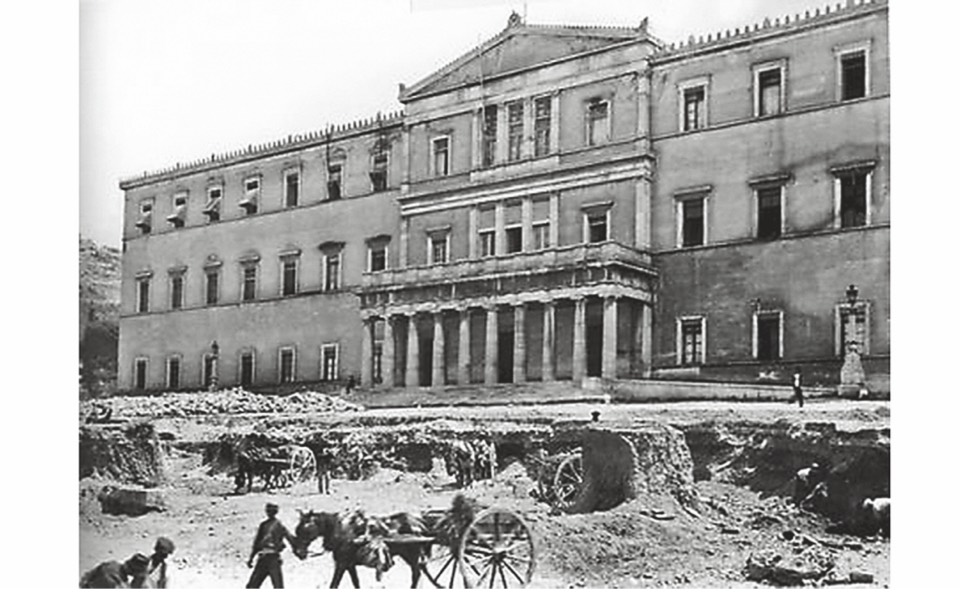

AN AESTHETIC NIGHTMARE
The most significant intervention in Emmanouil Lazaridis’ winning proposal concerned plans to dig up a 7-meter part of the natural slope in front of the former palace building and the creation of an almost flat plaza that would be flanked by a Π-shaped wall.
This wall, which would also contain the bas-relief sculpture of the Unknown Soldier, was designed to be as high as the floors of the building behind it, so that the monument could be viewed as a part of the same structure.
Today, the wall, which is dedicated to the struggles of the Greek nation, serves in the mind’s eye as the base of the Parliament building, or even as a pedestal of democracy.
This important architectural gesture was opposed by a large part of Greece’s architectural community – not to mention many others – who argued that it would be too violent an intervention in the natural landscape and would disrupt the sense of the building’s proximity to the ground, thus endowing it with a monumentalism that was not in keeping with its character.
In an article following the inauguration of the Tomb of the Unknown Soldier, the director of the Greek National Gallery at the time, Zacharias Papantoniou, wrote: “We lost the calm facade of the Bavarian edifice to gain what? Who would have thought! An aesthetic nightmare, with the palace floating in the air!”
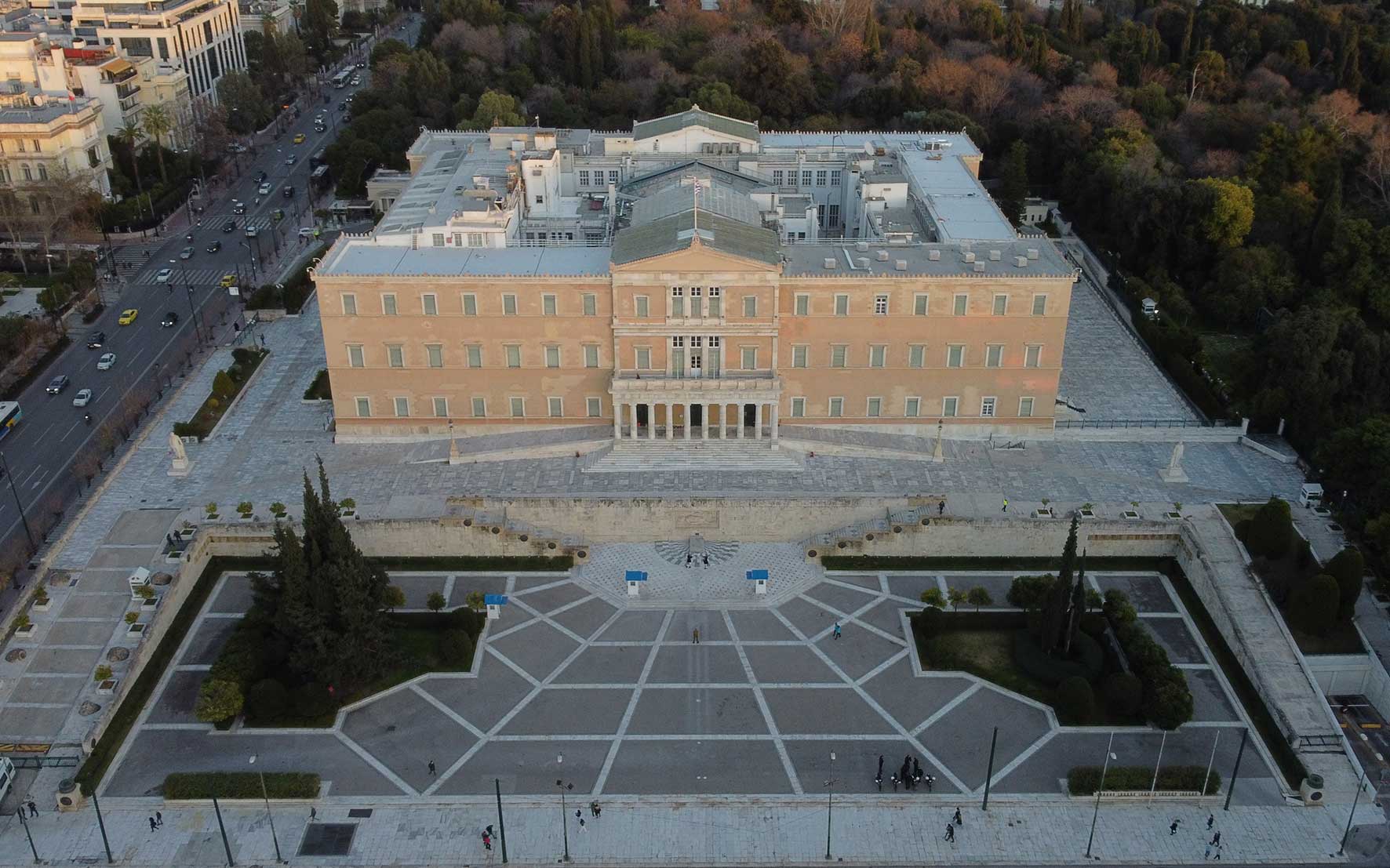

For sure, every radical change in a city’s public space causes something of a shock: Every demolition signals the end of something that lives, at the personal and at the collective level. Restoring this rupture, gaining familiarity with the area’s new characteristics and assessing them more profoundly are processes that take time.
The award-winning, French-educated Lazaridis gave us a monument, a wall and a forecourt that are unpretentious, in terms of their overall arrangement, their incorporation of decorative elements and the choice of materials.
With influences from Art Deco, references to Doric simplicity and pursuing a modern form of Classicism, the piece, which was quite pioneering for its time, stands well among its European peers.
It serves the purpose of creating a deliberate break in the city’s fabric and pace to reflect on memory and death, following the form of what is ultimately a theatrical backdrop that hosts both day-to-day and extraordinary rituals. And while the open square serves as a sort of barrier forestalling access to Parliament, it also inevitably constitutes the main arena – along with Syntagma Square – from which every public form of expression directed at the House is carried out.
Now, 90 years later, the product of an architectural competition that was carried out without having to submit to compromise, despite considerable backlash and thanks to the support of the prime minister himself continues to fulfill its enduring role among the city’s other public spaces.
–
Ariadni Vozani is an architect and a professor at the National Technical University of Athens’ School of Architecture.
This article was previously published at ekathimerini.com.

